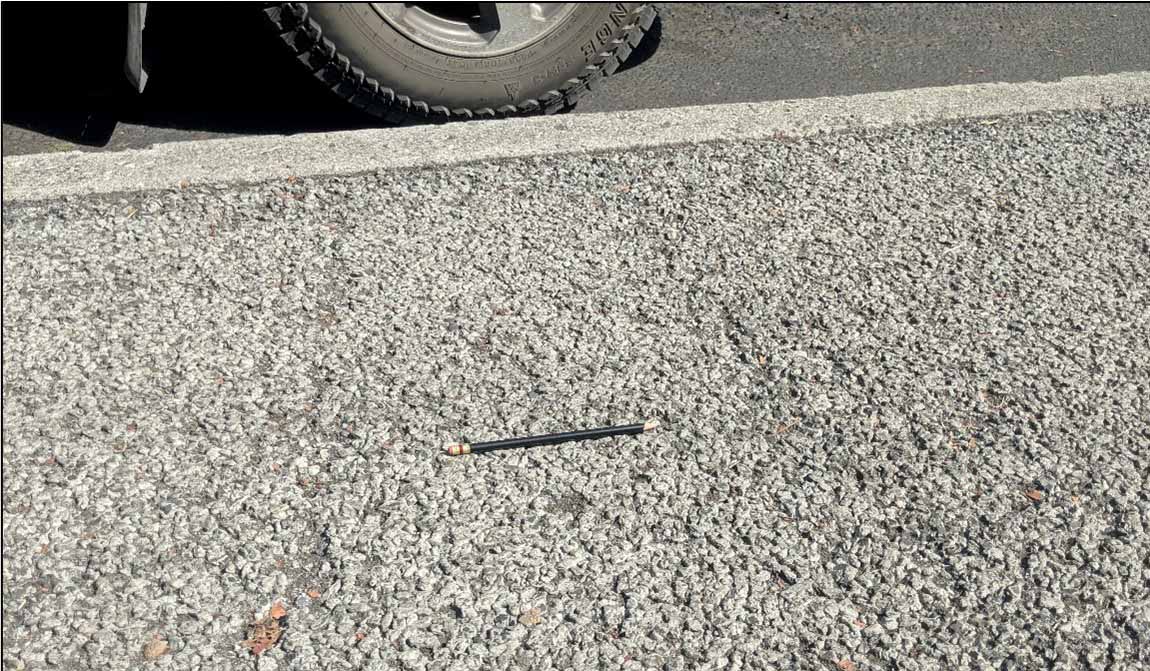Municipalities in the Pacific Northwest are increasingly using pervious concrete pavements (PCP). While this class of pavements offers significant ecological advantages, transportation departments must ensure that the pavements are safe for drivers and pedestrians in the region’s typical adverse winter conditions. To assist transportation departments in implementing more effective winter operations, this study aimed to develop a simple, image-based method to characterize the porosity of PCP.
Permeable pavements act like in-situ stormwater drainage systems and can eliminate the need for stormwater ponds, piping, and drainage systems, thereby reducing the overall cost of road construction projects. However, when PCP air voids become clogged by debris, the permeability of PCP may decrease, resulting in standing water that can form an ice layer on the pavement surface. As a result, PCP may ice more quickly than traditional, non-permeable pavements. In addition, one of the main advantages of PCP over conventional concrete is skid resistance due to its rougher surface. However, clogging of voids may also affect PCP skid resistance, which is important during icy conditions.
To help classify levels of clogging and the in-situ volumetric porosity of PCP, this study aimed to develop a simple, image-based method reliant on ubiquitous cell phone or digital cameras. To verify the accuracy of results obtained with photography and image processing tools, the researchers also applied submersion testing based on ASTM 1754 and X-ray computed tomography (X-ray CT).
First, the researchers investigated surface imaging-based porosity characterization. They cast 27 PC slabs at three targeted porosity levels—15, 25, and 35 percent. They photographed the slabs’ surfaces with an eight-megapixel, consumer-grade digital camera and reviewed the photos with an image processing technique. This method quantified the porosity as the ratio of the area of voids to the total surface area of the slab.
Then they subjected the slabs to ASTM 1754 submersion testing, which requires destructive coring of the pavement. Although the image-based results correlated strongly with the porosity results obtained with submersion, the image-based method consistently provided higher porosity values.
Results from an analysis of X-ray CT images of pavement slabs showed that porosities were higher at the top and bottom half-inch layers than at intermediate depths. This means that characterization of in-situ porosity solely with images from the top surface is not currently realistic. Imaging of more slabs in parallel with X-ray CT scans could help in developing models that would better describe the distribution of porosity.
Finally, the British Pendulum Tester (BPT) was used to test the in-situ skid resistance of five PCP sections on Washington State University’s Pullman campus. The in-situ skid resistance of PCP was found to be lower in wet surface conditions than in dry conditions. Therefore, to maintain high skid resistance, PCP should always be monitored to avoid clogging of voids and to ensure that the pavement is fully permeable and no stormwater is ponding on the surface.
The kinds of porosity results obtained could also be used to infer PCP strength and mechanical performance, which are difficult to characterize for in-situ pavement unless a core is extracted. In addition, the imaging method could eventually be used to quantify clogging and to help maintenance departments determine when to apply vacuum-sweeping to restore permeability.
Authors:
Somayeh Nassiri
Othman Alsharedah
WSU Department of Civil and Environmental Engineering
Sponsor: PacTrans

